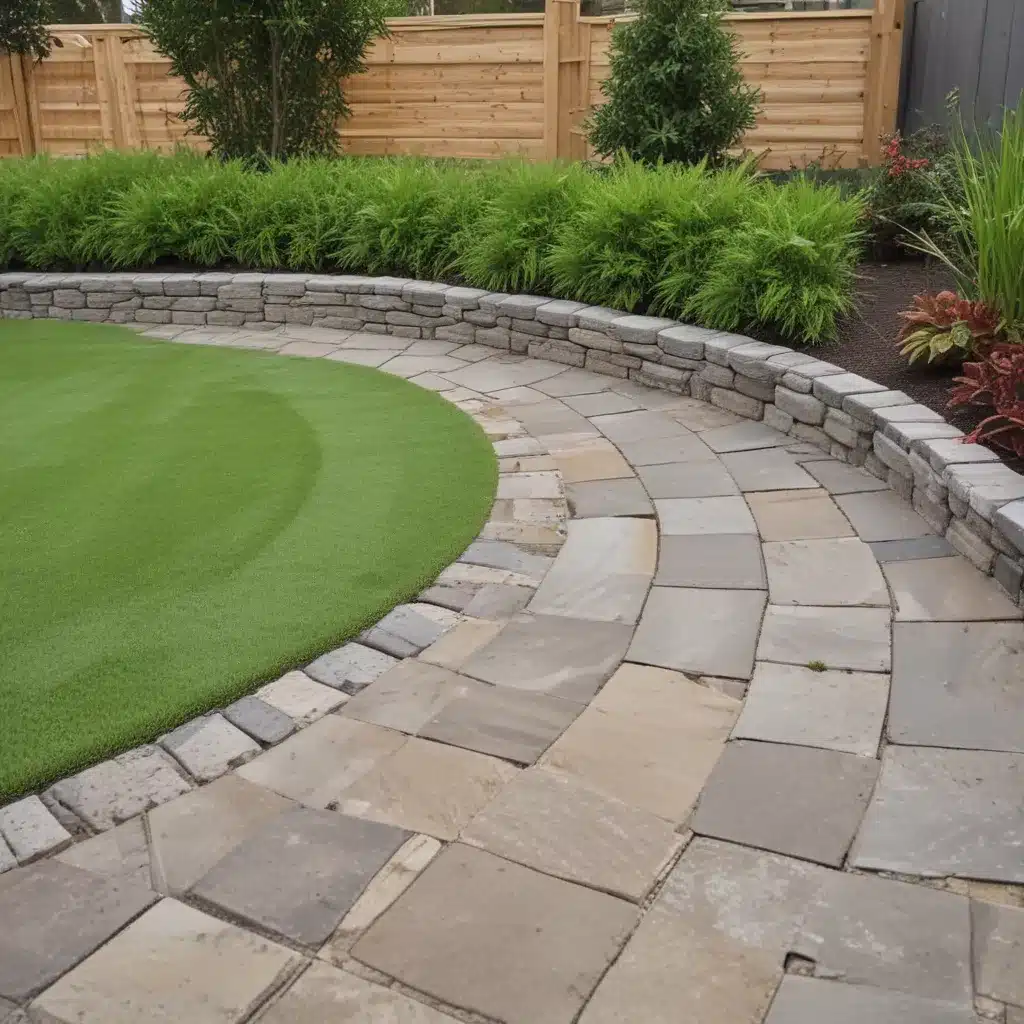
When it comes to transforming your outdoor living space, the choice between artificial turf and pavers can be a challenging one. Both options offer unique advantages and considerations that homeowners must weigh carefully. As an experienced outdoor living consultant for Cincinnati Patiopaving, I’ve seen firsthand the benefits and drawbacks of each solution. In this comprehensive guide, we’ll explore the nuances of artificial turf and pavers, providing you with the insights to make an informed decision for your dream patio.
Patio Paving Trends
Traditional Pavers
Pavers have long been a staple in the world of outdoor living, prized for their timeless aesthetic appeal and durability. These interlocking concrete, stone, or brick units can be arranged in a variety of patterns to create visually stunning patio designs. Pavers offer homeowners the flexibility to customize their space, from classic herringbone layouts to more modern, geometric arrangements.
Artificial Turf
In recent years, artificial turf has emerged as a popular alternative to traditional grass lawns, and this trend has extended to patio spaces as well. Synthetic grass provides a lush, evergreen appearance without the high maintenance associated with natural grass. Advancements in material technology have resulted in artificial turf that closely mimics the look and feel of its organic counterpart, making it an increasingly attractive option for homeowners.
Hybrid Solutions
As homeowners seek to blend the best of both worlds, hybrid solutions that combine pavers and artificial turf have gained traction. These designs often feature paver pathways or borders framing a central artificial grass area, creating a harmonious and visually appealing outdoor living space.
Outdoor Design Ideas
Aesthetic Considerations
When it comes to patio design, the visual appeal of your chosen material is a crucial factor. Pavers offer a wide range of colors, textures, and patterns that can be used to create unique, eye-catching layouts. Artificial turf, on the other hand, provides a consistent, pristine appearance that can complement a variety of architectural styles, from modern to traditional.
Functional Requirements
The intended use of your patio space should also guide your decision-making process. Pavers are well-suited for high-traffic areas, as they can withstand heavy foot traffic and even support the weight of outdoor furniture. Artificial turf, while durable, may be better suited for more passive recreational uses, such as a play area for children or a relaxing lounge space.
Customization Options
Both pavers and artificial turf offer ample opportunities for customization. Pavers can be laid in intricate designs, incorporating different colors and shapes to create visually stunning patterns. Artificial turf can be trimmed and shaped to fit the contours of your space, making it a versatile option for unique patio layouts.
Installation Techniques
Pavers
Proper installation is crucial to the long-term success of a paver patio. This typically involves excavating the area, laying a compacted gravel base, and then carefully placing and aligning the individual pavers. Attention to detail is essential, as uneven or improperly installed pavers can lead to unsightly gaps and potential safety hazards.
Artificial Turf
The installation of artificial turf requires a different approach. This process often involves preparing the ground, laying a compacted gravel or crushed stone base, and then securing the synthetic grass material in place. Proper drainage is a crucial consideration, as artificial turf must be able to effectively manage water runoff to prevent pooling or flooding.
Hybrid Systems
Hybrid patio solutions that combine pavers and artificial turf require a combination of the two installation methods. The paver areas must be installed first, followed by the artificial turf sections. Careful planning and coordination between the two components are essential to ensure a seamless and visually cohesive final result.
Maintenance Guidelines
Pavers
Maintaining a paver patio involves regularly sweeping away debris and addressing any shifting or settling of the individual pavers. Periodic re-application of joint sand or polymeric sand can help to secure the pavers and prevent weed growth. In some cases, pavers may require pressure washing or the use of specialized cleaners to maintain their pristine appearance.
Artificial Turf
Caring for artificial turf requires a different approach. Regular brushing or raking can help maintain the turf’s upright appearance and even out any compaction. Periodic cleaning with a mild detergent or disinfectant can also help to remove any dirt or debris. Unlike natural grass, artificial turf does not require mowing, watering, or the application of fertilizers and pesticides.
Hybrid Approaches
Maintaining a hybrid patio solution that combines pavers and artificial turf involves a combination of the above techniques. The paver areas must be cared for as described, while the artificial turf sections require their own dedicated maintenance routines.
Cost Comparisons
Initial Investment
When it comes to the initial investment, the costs of pavers and artificial turf can vary significantly. Pavers tend to be more expensive, with the specific material and installation methods influencing the overall price. Artificial turf, on the other hand, can be a more cost-effective option, especially for larger patio areas.
Ongoing Maintenance
The long-term maintenance requirements of pavers and artificial turf also play a role in their respective costs. Pavers may require periodic resetting, joint sand replenishment, and occasional cleaning, all of which can add up over time. Artificial turf, with its lower maintenance needs, can present a more budget-friendly option in the long run.
Long-Term Value
When considering the overall value of your patio investment, both pavers and artificial turf have their merits. Pavers are known for their durability and ability to withstand heavy use, potentially increasing the long-term value of your home. Artificial turf, with its low-maintenance requirements and consistent appearance, can also be a valuable addition to your outdoor living space.
Ultimately, the choice between artificial turf and pavers for your patio project will depend on your specific needs, preferences, and budgetary considerations. By carefully weighing the pros and cons of each solution, you can make an informed decision that will transform your outdoor living space into a true oasis. For more information on patio paving, landscape design, and outdoor living, be sure to visit Cincinnati Patiopaving.

